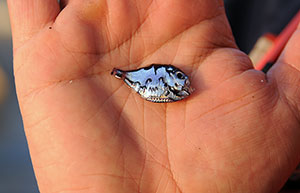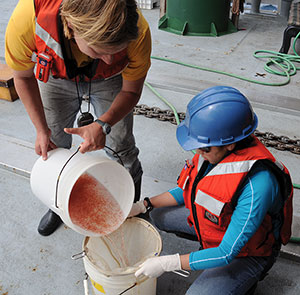By Nathan Jones
Will the Antichrist rule over every nation of the earth, or just 10 of those nations? Will he be a global ruler, or a local ruler over a coalition of nations? Will the world tremble under his iron grip, or only the nation of Israel fear his wrath? Global, or local Antichrist?
Local View
Where does the local view that the Antichrist will rule just ten nations come from? Revelation 17:12-13 is the answer. It reads, "The ten horns you saw are ten kings who have not yet received a kingdom, but who for one hour will receive authority as kings along with the beast. They have one purpose and will give their power and authority to the beast."
As the text states, in the future ten kings (presidents, dictators, whatnot) will arise to rule kingdoms and will for a short time in history grant their power to "the Beast," which Bible prophecy students will recognize as the Antichrist. The Antichrist is given rulership over the ten kingdom nations.
The local view stops with this description. All the further acts in Revelation that the Antichrist commits against the Jews is just for the Jews, and as this view holds, has nothing to do with the rest of the world. It's Israel against a ten-nation empire, and that's that.
Global View
The global view takes Revelation 17:12-13 and puts it into context with other passages that express the scope of God's wrath during the Tribulation, the time period the Antichrist has such prominence in. The references are as follows:
Concerning the amount of nations the Lord is angry with: "The LORD is angry with all nations; his wrath is upon all their armies. He will totally destroy them, he will give them over to slaughter." - Isaiah 34:2
Concerning the number of nations the Jews were scattered to that the Lord will destroy: "I am with you and will save you,' declares the LORD. 'Though I completely destroy all the nations among which I scatter you, I will not completely destroy you. I will discipline you but only with justice; I will not let you go entirely unpunished.'" - Jeremiah 30:11
Concerning the number of nations that will join to attack Israel: "I will gather all nations and bring them down to the Valley of Jehoshaphat. There I will enter into judgment against them concerning my inheritance, my people Israel, for they scattered my people among the nations and divided up my land." - Joel 3:2
Concerning the available fighting men available to attack Israel: "Proclaim this among the nations: Prepare for war! Rouse the warriors! Let all the fighting men draw near and attack." - Joel 3:9
Also concerning the number of nations that will join to attack Israel: "I will gather all the nations to Jerusalem to fight against it; the city will be captured, the houses ransacked, and the women raped. Half of the city will go into exile, but the rest of the people will not be taken from the city." - Zechariah 14:2
Concerning how much of the world the Lord will gather and destroy: "Therefore wait for me,' declares the LORD, 'for the day I will stand up to testify. I have decided to assemble the nations, to gather the kingdoms and to pour out my wrath on them — all my fierce anger. The whole world will be consumed by the fire of my jealous anger." - Zephaniah 3:8
Concerning the influence of the Antichrist's kingdom: "A second angel followed and said, 'Fallen! Fallen is Babylon the Great, which made all the nations drink the maddening wine of her adulteries.'" - Revelation 14:8
Concerning the scope of the Antichrist's ability to call the world into battle: "They are spirits of demons performing miraculous signs, and they go out to the kings of the whole world, to gather them for the battle on the great day of God Almighty." - Revelation 16:14
Also concerning the influence of the Antichrist's kingdom: "For all the nations have drunk the maddening wine of her adulteries. The kings of the earth committed adultery with her, and the merchants of the earth grew rich from her excessive luxuries... The light of a lamp will never shine in you again. The voice of bridegroom and bride will never be heard in you again. Your merchants were the world's great men. By your magic spell all the nations were led astray." - Revelation 18:3, 23
In all ten of these verses, either or both of the words "all" and "whole" are used to explain the number of nations involved that:
1. the Jews were scattered to in the Diaspora
2. the Antichrist will influence
3. the Antichrist will command
4. the Antichrist will general their armies
5. the Lord's anger will burn against
6. the Lord will gather in Israel
7. the Lord will destroy
Judgments
Beyond these verses, Revelation portrays the judgments God lets loose. Does he let loose these judgments on the whole earth, or just on the Antichrist's ten kingdoms?
Verses like the Seal Judgments in Revelation 6:12-17 set the scope:
"I watched as he opened the sixth seal. There was a great earthquake. The sun turned black like sackcloth made of goat hair, the whole moon turned blood red, and the stars in the sky fell to earth, as late figs drop from a fig tree when shaken by a strong wind. The sky receded like a scroll, rolling up, and every mountain and island was removed from its place.
Then the kings of the earth, the princes, the generals, the rich, the mighty, and every slave and every free man hid in caves and among the rocks of the mountains. They called to the mountains and the rocks, ‘Fall on us and hide us from the face of him who sits on the throne and from the wrath of the Lamb! For the great day of their wrath has come, and who can stand?'"
Then there's the Trumpet Judgments of Revelation 8 and 9, full of references to the plagues resulting in a third of the world, waters, light and peoples being destroyed. The "rest of mankind" in Revelation 9:20 are left to face the Bowl Judgments, ending with an earthquake so great that "No earthquake like it has ever occurred since man has been on earth, so tremendous was the quake… Every island fled away and the mountains could not be found" (Rev. 16:18, 20).
Each of these plagues were so terrible in scope — involving sun, moon, stars, bodies of water and land — that they could not happen without effecting the entire planet.
Objection to the Global View
An objection made against the global view rests on a figure of speech called synecdoche. Synecdoche, pronounced "si-nek-duh-kee," is defined as "a figure of speech in which a part is used for the whole or the whole for a part." In this case, the words "all" and "whole" that the various authors in the Bible use is a form of exaggeration. It is like saying "he ate the whole bag of popcorn," when in reality he only ate the popcorn within the bag and not the bag itself (hopefully).
The objection rests on other references in the Bible that use synecdoche, such as Paul's compliment to the church in Rome in Romans 1:8 that their "faith is being reported all over the world." Or, in Daniel 2:38, when Nebuchadnezzar is told he in his dream was made ruler over all of mankind, beasts and birds. In these two examples the use of synecdoche is quite evident in the context, as clearly "all" the world at the time hadn't heard of the faith of the church in Rome, just the Roman Empire, and all of mankind at the time didn't know they were subject to Nebuchadnezzar, just where his influence resided over.
And yet, hasn't the faith of the church in Rome today been spread all over the world since Paul's time through the Bible? And, didn't God give Nebuchadnezzar authority over the entire world, though some lands didn't know who God's "world king" at the time was? But, that's a side counter.
The local view concludes that in all ten verses by all six prophetic authors God Himself is exaggerating what He is going to accomplish during the Tribulation. Such a claim goes far beyond sound biblical, literal interpretation and sounds reminiscent of Satan's deceptive query in Genesis 3:1, "Did God really say..."
To attribute synecdoche to these weighty verses and conclude that the Antichrist is a local ruler that doesn't affect the world outside of his ten nations and Israel is to ignore God's plan for the ages — one that brings justice, restores Israel, and sets up His Millennial Kingdom.
An Old "Global or Local" Debate
Another "Global or Local" debate once raged over whether the Flood during Noah's time covered the entire planet, or was merely an overflowed body of water in the Middle East. The global view in this Flood debate continues to base itself on the Genesis account's literal, repeated statements that God's watery wrath upon man's evil was global in nature, such as in Genesis 6:17, "I am going to bring floodwaters on the earth to destroy all life under the heavens, every creature that has the breath of life in it. Everything on earth will perish."
The Genesis account has been confirmed as global in scope by both paleontology and geology beyond the literal reading of Genesis 6:17. After all, something had to get all those clam fossils up to the tops of mountains, and trees buried vertically through ground layers. And yet, despite the Bible's account of the Flood reiterating again and again that it covered the whole earth and all the extra-biblical evidence, a few remain who hold to the local view of the Flood.
How far the Antichrist's empire will extend has become the new "Global or Local" debate.
Conclusion
The Bible makes it clear the Antichrist will rule ten nations, but it also makes it clear their boundaries and authority encompass the entire planet. Like the Flood debate, the literal, biblical descriptions concerning the world-wide scope of God's wrath upon the whole world overwhelmingly support a Global Antichrist.
.jpg)


